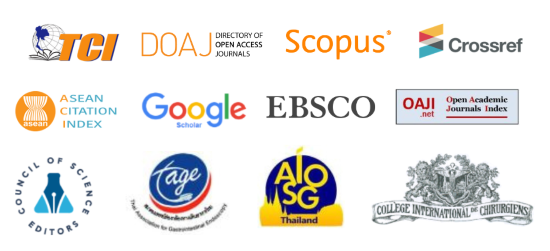Information For Readers
At SMJ we believe that peer review is the foundation for safeguarding the quality and integrity of scientific and scholarly research. We want to do everything we can to support reviewers (also sometimes known as "readers") and to recognize their contribution. This is why we’ve created these guidelines. They’re part of our broader goal to facilitate the review experience for journals – and help safeguard the integrity of the research we publish.
Peer review
The Siriraj Medical Journal (SMJ) practices Double-blind peer review for all types of manuscripts.
Double-blind peer review is a model of peer review which reduces bias by allowing reviewers to judge the manuscript based on content alone, un-biased by knowledge of who the authors are.
- Guidelines for peer reviewers
SMJ follows the practices of the Committee on Publication Ethics (COPE) in evaluating each manuscripts. COPE has developed Ethical Guidelines for Peer Reviewers, to which reviewers can refer for guidance.
- Step by step guide to reviewing a manuscript
- When you receive an invitation to peer review, you should be able to see the paper's abstract to help you decide whether you wish to do the review. You should also be able to see when the invitation expires and the date your review comments should be submitted. Try to respond to invitations promptly - it will prevent delays. It is also important at this stage to declare any potential Conflict of Interest.
- When accepted the invitation, you will receive a copy of the paper to review. You may complete our Reviewer Form while reading, or have a read-through and conclude your consideration at the end of the review. You may consider some of the questions to help you form your overall impression:
> What is the main question addressed by the research? Is it relevant and interesting?
> How original is the topic? What does it add to the subject area compared with other published material?
> Is the paper well written? Is the text clear and easy to read?
> Are the conclusions consistent with the evidence and arguments presented? Do they address the main question posed?
> If the paper includes tables or figures, what do they add to the paper? Do they aid understanding or are they superfluous?If you suspect plagiarism, including self-plagiarism, but cannot recall or locate exactly what is being plagiarized, notify the editor of your suspicion and ask for guidance. Most editors have access to software that can check for plagiarism.
Editors are not out to police every paper, but when plagiarism is discovered during peer review it can be properly addressed ahead of publication. If plagiarism is discovered only after publication, the consequences are worse for both authors and reviewers, because a retraction may be necessary.
-
Comments to Editors and Authors
The editor not only uses reviewer comments to help make a decision. They will often refer to them in their decision letter.
With this in mind, it’s helpful to editors if you:> Number your comments
Are clear about which points are absolutely critical if the paper is given an opportunity for revision> Suggest how authors can address any concerns raised
Specific recommendations for correcting flaws are very welcome by editors and useful to authors.
> Keep in mind that comments to editors should only be used for notes that you don’t want the authors to see. Anything that is important for the authors to know should be in comments to the authors, not the comments to the editors.
- Recognition for Reviewers
A reviewer’s input to the editorial process is invaluable, and as publishers, we seek to recognize the efforts of reviewers.
- Build your profile on Web of Science Reviewer Recognition Services (formerly Publons)
- Make sure you register for an ORCID iD and link it to your Publons account
- Get your Reviewer Recognition Certificate after you review (Please contact the Journal office)






